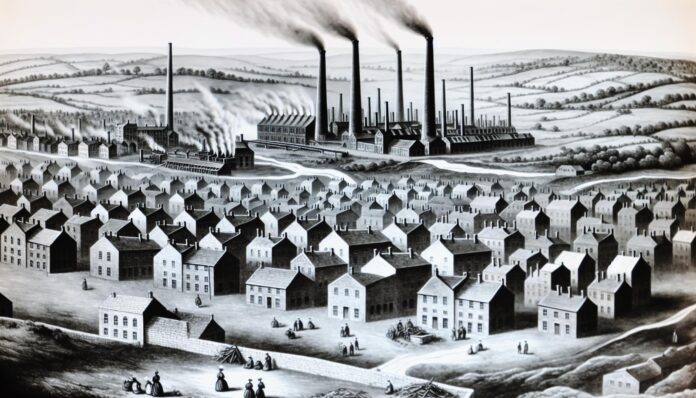Uncovering the Early Traces of Human Impact on Earth’s Climate
Most importantly, recent research highlights that the unmistakable evidence of human-caused climate change started appearing in our planet’s atmosphere much earlier than previously assumed. Because advanced scientific techniques are now applied to historical data, a thought experiment reveals these signals could have been detected as early as the late 19th century. This insight fundamentally alters the narrative on human influence as industrial activities began reshaping Earth’s environment decades before modern conveniences were introduced.
Furthermore, this research challenges long-held assumptions regarding the onset of anthropogenic climate signals. Besides that, by revisiting historical climate records using state-of-the-art computational models, scientists have shown that even early industrial activities left a measurable imprint, proving that human influence was detectable long before widespread awareness emerged. For more information, you can also explore findings reported on platforms such as ABC17 News and detailed discussions at The Wilkes Center for Climate Education.
The Science Behind Climate ‘Fingerprints’
Because climate fingerprints refer to the unique markers that differentiate human-induced changes from natural variability, scientists employ highly sophisticated computer simulations and observational datasets to track these patterns. This approach not only confirms the presence of human influence but also reinforces the reliability of modern detection methods. Most importantly, the divergence between warming trends in the troposphere and cooling in the stratosphere serves as a clear indication of anthropogenic impact, a signature that has been consistently observed in recent studies.
Moreover, the analysis delves deeper into atmospheric layers that react differently to greenhouse gases. For instance, while the lower atmosphere warms due to increased carbon emissions, the upper atmosphere experiences cooling. Therefore, using these distinct temperature changes as a fingerprint, researchers have been able to isolate human-caused effects from natural phenomena. Additional insights from Physics World and the work published in PNAS provide further validation for this groundbreaking approach.
Detectable Since the 1880s: A Surprising Discovery
Besides that, modern detection methods have revealed that human-caused climate signals were first noticeable around 1885. This period, immediately following the initial phase of the industrial revolution, marks a pivotal moment when early human activities began altering the natural state of our climate. Accordingly, these discoveries underscore that measurable environmental changes have been occurring for over 140 years despite earlier scientific estimates focusing primarily on the 20th century.
Furthermore, research indicates that such early signals were more evident in the upper atmospheric layers, specifically the stratosphere. Because these layers are less affected by everyday weather patterns, subtle changes become more noticeable, emphasizing the long-standing influence of human activity. Therefore, historical data paired with modern analytical tools reveal a much earlier onset of detectable climate change than previously documented, as highlighted in studies by Science Alert.
What Does This Mean for Climate Science Today?
Most importantly, the early detection of human-induced climate effects holds tremendous implications for contemporary climate science. Because the phenomenon was detectable much earlier than anticipated, it forces the scientific community and policymakers to re-evaluate timelines and strategies in combating climate change. Therefore, current climate models are now adapting to incorporate these historical insights, which heightens the urgency for proactive global monitoring and intervention.
Furthermore, this redefined timeline enhances the dialogue between scientists, governments, and the public. By understanding when human influence first became apparent, society can better appreciate the long-term impacts of environmental policies and industrial practices. Detailed discussions and expert opinions are available at The Wilkes Center for Climate Research, further bridging the gap between past data and future climate policy.
How Fingerprinting Refines Climate Models
Because fingerprinting has demonstrated its potential in accurately identifying human-caused climate signals, it remains a crucial tool for refining climate models. Researchers have built on foundational work dating back to climate pioneers like Svante Arrhenius. Most importantly, modern data analysis confirms that the temperature divergence observed in the lower and upper atmospheric layers is directly linked to anthropogenic activities. Consequently, these refined models offer more precise forecasts for future climate behavior.
In addition, continuous improvements of these models using current data have led to more effective solutions for monitoring and predicting climate dynamics. Transitioning from theoretical frameworks to practical applications, the integration of historical records with current observations provides a holistic view of our planet’s environmental shifts. For further reading on this topic, the discussion featured at Physics World offers additional context and technical details.
Looking Back to Move Forward
Therefore, exploring the early traces of human influence on climate empowers us to design better mitigation and adaptation strategies. Reflecting on the past, we acknowledge that our environmental footprint began long before contemporary recognition. Most importantly, historical climate fingerprints not only trace our legacy of change but also illuminate the path for future interventions.
Moreover, recognizing that climate change is a long-standing issue reinforces the necessity of urgent global action. Because our analysis now links early industrial practices with modern climate challenges, policymakers and scientists are equipped with a more accurate roadmap for response. In conclusion, as these compelling findings indicate, the journey from past to present provides vital lessons for building a sustainable future, emphasizing the importance of immediate and informed climate action for the welfare of our planet.



